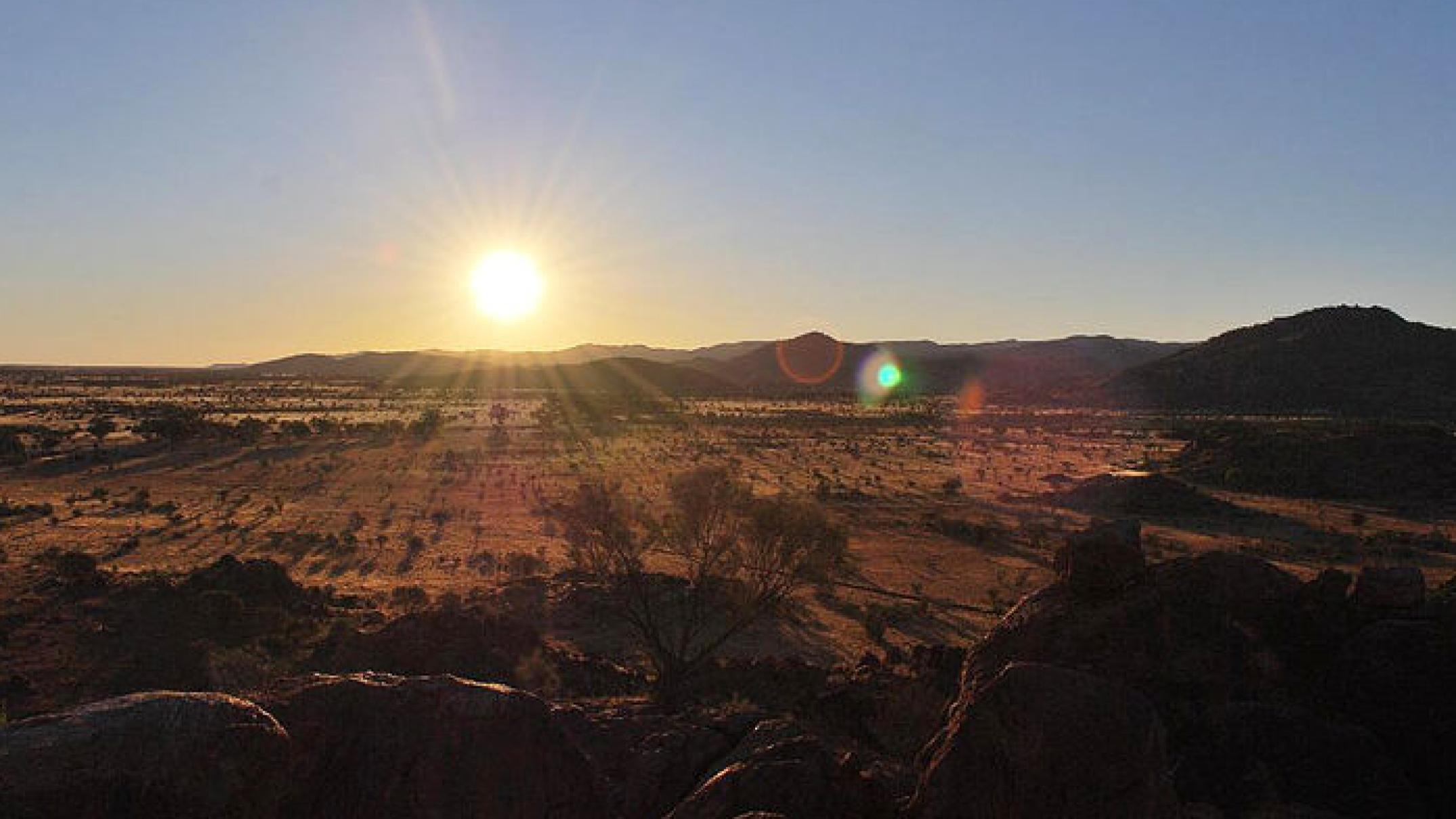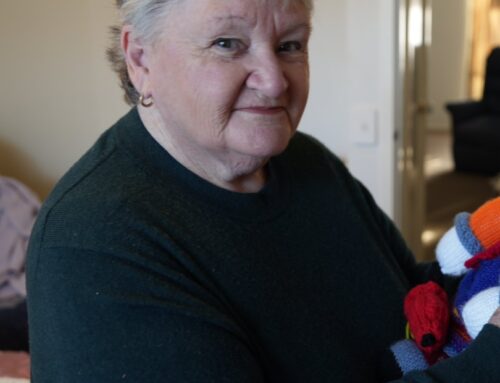A geological map of remote Aboriginal lands in South Australia has been translated into Pitjantjatjara to increase communication and empower First Nations people.
Key points:
- The map shows the extent of palaeovalleys beneath the APY Lands in outback South Australia
- Iwiri Aboriginal Corporation has translated the information into the Pitjantjatjara language
- Iwiri Aboriginal Corporation’s Sam Osborne said it would help empower Aboriginal people
The map shows a large palaeovalley – an ancient, buried river – underneath the Anangu Pitjantjatjara Yankunytjatjara (APY) Lands and was translated to create better communication with the South Australian Government and help people living on the lands to know more about where they live.
The map was initially developed by the Department of Energy and Mining, along with other institutions.
“This broadscale map intends to inform about the extent of palaeovalleys under cover within the APY Lands as well as providing information about the location of the deepest part of the palaeovalley via thalweg mapping,” the map’s preamble says.
Sam Osborne from Iwiri Aboriginal Corporation, the organisation behind the translation, said it would help to empower Aboriginal people.
“Giving people a very clear understanding of the field that’s being negotiated and allowing people to speak in their own terms in their own voice does empower communities in negotiations with powerful institutions,” he said.
“That process of moving inaccessible technical language into a language that community can get a grasp of and appropriate it in a way that they want to communicate is extremely powerful.
The translation process
Dr Osborne, who’s also Associate Director for Regional Engagement on the APY Lands at the University of South Australia, said translating English resources into Aboriginal languages was a lengthy process.
“Something that’s a fairly scientific, technical, piece of text, like this map, we would usually break it down with English-first-language Pitjantjatjara translators,” he said.
Dr Osborne said the initial translation would go to a group of translators to continue work on it before it was reassessed.
“It’s quite an elaborate process when we’re working across technical fields that are fairly developmental in Pitjantjatjara language,” he said.
“That’s a process we’ve applied to a range of different fields, health, COVID information, technical rulebooks around governance.
“We’re crossing over into a whole range of new and interesting developmental areas of language and translation into Aboriginal languages like Pitjantjatjara and Yankunytjatjara.”
COVID-19 information
Dr Osborne said translating coronavirus-related information from SA Health brought unique challenges, mainly because of the turnaround speed required.
“We had a call from government that needed a fairly significant amount of public information out, that needed to be accurate and accessible and clear about what the message was,” he said.
“That had a team of seven translators working over the weekend and night and day to pull that together.
“It does take work, and it takes teamwork.”





